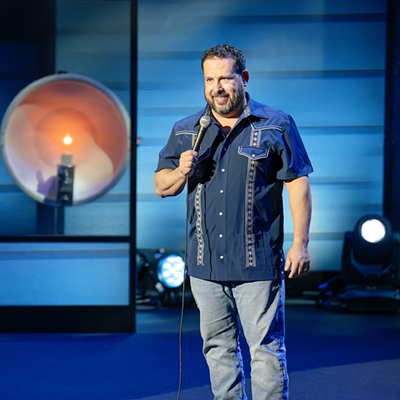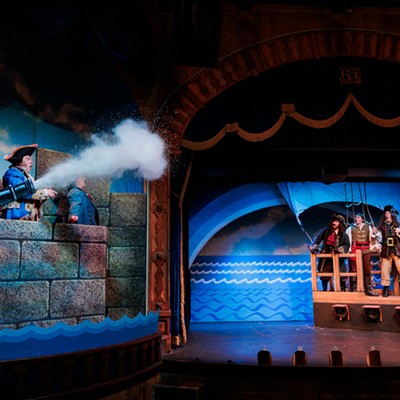Although constructing the new Warden Aquarium at the Arizona-Sonora Desert Museum took a full year, the aquarium was conceived more than 50 years ago.
"Early in the museum's history, the idea was to have a 'Gulf Hall,' but for a variety of reasons, that never happened until now," says Craig Iyani, the museum's executive director.
Officially named the Warden Aquarium "Rivers to the Sea," it is the first new major exhibit to open at the museum in more than 10 years. The aquarium will explore the integral roles that the Gulf of California and the region's rivers, including the Colorado, play in the ecosystems of the Sonoran Desert.
The 1,100-square-foot aquarium will include 14 tanks in two galleries: one focusing on the region's freshwater rivers and aquatic life, and the other representing the Gulf (also known as the Sea of Cortez). Almost three dozen examples of living species will be included.
The aquarium will open to the public with a grand opening Saturday, Jan. 5. A variety of activities and events at the museum that day are in the planning stages. Details were not available at press time, but you can learn more by visiting www.desertmuseum.org.
The Warden Aquarium's primary funding of $400,000 came from the Bert W. Martin Foundation, Iyani says. "That's the Warden family—they're the ones who actually made this possible."
The total cost of the aquarium, including construction and renovation of some areas of the museum, came to about $750,000, he adds.
In a way, the Warden Aquarium was given a boost when the Desert Museum began working with the University of Arizona on the now-abandoned Sonoran Sea Aquarium project planned for the Rio Nuevo development downtown. Some of the programs begun with that project have been carried over at the new aquarium, Iyani says.
Cynics or the uninformed might wonder why an aquarium is important in the desert.
"The Gulf of California is certainly part of the Sonoran Desert region. The desert stretches across the gulf, and includes more than 900 small islands with desert vegetation. And a large part of Baja California is part of the Sonoran Desert," Iyani says.
Among the sea life in the Gulf of California are more than 800 types of fish; one of the most endangered marine mammals, a rare porpoise called the vaquita; migratory whales that no longer migrate; five species of sea turtle; and the little-known American crocodile, according to Desert Museum literature.
And, in case you haven't noticed the monsoon season, the climate in Southern Arizona is inextricably linked to the Sea of Cortez. "When you live in Tucson, you are directly affected by seasonal rainfall that comes up from the Gulf of California," Iyani says.
The other half of the aquarium is dedicated to the rivers of the Sonoran Desert. "The main river in this region is the Colorado, and even though we don't live right near the Colorado, we largely benefit from the water and habitats that are part of it," Iyani says.
He says the aquarium also will play a part in ongoing conservation efforts by the Desert Museum, and that much of 7,500 gallons of water used in the exhibit is repurposed through the museum's wetland treatment facility or reused to supplement irrigation.
The aquarium will also include a "touch tank" with marine invertebrates, such as sea stars and hermit crabs, for hands-on encounters with visitors.
At first, the touch tanks will be available to visitors only during behind-the-scenes tours, to allow the animals to adjust to their new environment and to being handled by humans. The museum plans to make the touch tanks available to all visitors by late spring.
Admission to the aquarium is included in the price of a general admission ticket to the museum but capacity is limited, and you'll need a reservation for one of 15 viewing times scheduled throughout the day, says marketing specialist Gina Compitello.
You can reserve a viewing time on a first-come, first-served basis upon arriving. Or you can make an advance reservation at the museum's website for an additional charge of $5, Compitello adds. "We want to ensure that visitors have the best experience possible," she says.
The Arizona-Sonora Desert Museum is at 2021 N. Kinney Road, in Tucson Mountain Park. It's open daily from 8:30 a.m. to 5 p.m. (with final entry at 4:15) through February; starting in March, the museum opens at 7:30 a.m. Now through May, general admission is $14.50; kids ages 4 to 12 get in for $5, and those 3 and younger are admitted free. For driving directions and Warden Aquarium reservations, visit www.desertmuseum.org. Call 883-2702 for more information.
Pacific seahorses are among the 30-plus living species on display at the Walden Aquarium.







